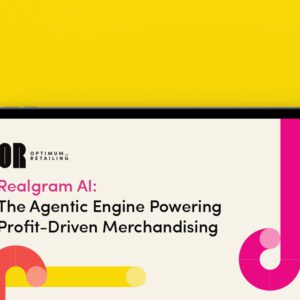By Graeme Grant, Demandware

You’ll be hard pressed to find a retailer today that isn’t prioritizing the use of Big Data to improve the customer shopping experience. With the enormous amount of valuable information easily collected from each digital interaction — from purchase history and loyalty cards, to browsing behavior and social media — it’s clear why Big Data remains a priority. By analyzing and making sense of this data, retailers have a window into the tastes and habits of customers and can better cater to customers’ future needs.
As retailers kick off 2015 personalization plans, however, they need to reassess whether they are getting the maximum value out of their efforts. In particular, they need to pay attention to the subtle — but extremely important — distinction between reactive and predictive personalization.
Reactive Personalization
Reactive personalization happens when a consumer takes the first action (e.g. browses a site or abandons a shopping cart) and the retailer tailors a message to the consumer based on the action. Examples include a “you may also like” banner on a product detail page to which a consumer has just navigated or a “you forgot something in your cart” email the day after a consumer leaves a web site without making a purchase.
There are a lot of claims about the effectiveness of reactive personalization (“We get 2x the conversion rate on our abandon cart emails!”), and these claims are generally true. This tactic does work! There is, however, an Achilles’ heel you don’t hear much about: Scope. Specifically, the scope of the customer base to which you can apply reactive personalization.
By definition, reactive personalization only works when the consumer first acts. Yet for the majority of retailers outside the grocery industry, the bulk of their customers did not just “take action.” A retailer’s typical customer only shops with them once or twice a year. So on any given day, a retailer can only use reactive personalization for a very small fraction of its active customer base. That’s not much help to the email marketer who sends out five to 10 emails a week to a full email list!
Enter: Predictive personalization.
Predictive Personalization
Predictive personalization means you can proactively anticipate what a customer wants before action is taken. It is a much harder and more complicated approach, but with the combined power of Big Data, machine learning and new predictive science techniques, retailers can personalize shopping experiences for anyone, even for customers who may not have shopped with them in a year or longer! This “scope” difference may seem subtle, but it makes all the difference in the world to retailers. Many retailers have built billion dollar businesses based on their average customer shopping only once or twice per year. Can you imagine the incredible business opportunity that exists if retailers could move the average number of shopping experiences up to two or three times per year? Reactive personalization can’t do it, but predictive personalization has that potential.
It’s important to understand that personalization is about a lot more than just deals and coupons. When done correctly, personalization is about delivering relevance to each individual consumer. Relevance can (and should) be about the products and offers the consumer will find compelling.
Relevance also is about showing the consumer you can solve their particular needs. For instance, let’s pretend John D. from California likes a particular apparel brand and gets emails from the retailer where he buys that brand. John prefers to make his purchases in-store, where he can actually touch and feel the clothing before he buys. In this instance, a retailer could email John to let him know when a new item in his size from that brand arrives at his local store and offer a way for him to reserve it for pick-up.
While this retailer could consider including a deal or coupon as an additional incentive for John, it has already provided him real value by alerting him to the item’s availability and offering to hold it for pick-up at his convenience. From John’s perspective, this retailer has shown it pays attention to him, understands his tastes and shopping preferences, and cares about his business by making it easier for him to get what he wants. Note, too, that John didn’t have to make the first move and come to the retailer to look for the desired item. Instead, the retailer anticipated his needs and reached out to him! This is what predictive personalization can do.
This year, I urge retailers to move beyond reactive mode. Utilize your existing customer data to power highly personalized customer experiences, in which consumers’ future preferences and behaviors are anticipated and proactively acted upon. I know this can seem like a daunting objective, but predictive intelligence companies are becoming more established, offering exceptional data science, a modern cloud-based infrastructure and a SaaS-based pricing model.
So make 2015 the year of predictive personalization. In doing so, you’ll earn happier customers and more sales.
Graeme Grant is the VP of Predictive Intelligence at Demandware. He is formerly the President and COO of CQuotient, which was acquired by Demandware in October 2014. CQuotient is a leading predictive intelligence platform focused on retail where the dominant use case is dynamically tailoring and personalizing the content of an email or website to each individual consumer’s tastes. Graeme is a start-up and high-tech veteran with particular expertise in the retail sector, and has held previous positions at Allurent, ProfitLogic, Oracle Retail and others.






